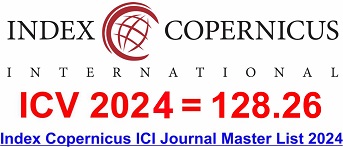The Phenomenon of the Root Causes of Teenage Pregnancy in Indonesia: A Qualitative Study of the Family Functioning
DOI:
https://doi.org/10.31674/mjn.2024.v16isupp1.013Abstract
Background: Teenage pregnancy (TP) in Indonesia is still high and contributes to maternal and infant mortality. This study explores the role of family functioning (FF) in preventing TP. Methods: This qualitative research used in-depth interviews with three mother-daughter dyads with TP experience, three mother-daughter dyads without TP experience, and Focus Group Discussions (FGDs) with four school teachers and four HCPs (Health Care Provider) at the Puskesmas. The data were transcribed verbatim and analysed by thematic analysis. Results: The research results show that the root causes of TP related to poor FF practice were: 1) the mother was not involved in solving the daughter's sexual problem, 2) the mother was not confident in sexual communication, 3) poor relationships with her daughter, 4) mother's lack of involvement in the daughter's sexual behaviour, and 5) lack of control daughter’s behaviour. Additional causes are 1) Weak school policies and low teacher confidence in providing CSE and 2) Lack of implementation of YFHS (Youth-friendly health services) at the Puskesmas. Conclusion: The themes regarding the root causes of TP start from individual factors, maternal low knowledge, and awareness about Sexual Health for her daughter; secondly, interpersonal factors, namely the mother's poor practice in implementing the six dimensions of FF, including the mother's lack of involvement in solving problems, poor communication on the prevention of daughter’s sexual risk behaviour due to insufficient affective responsiveness and affective involvement, and poor monitoring and control of the daughters' sexual risk behaviour. The organizational and policy factors are inadequate implementation of CSE (Comprehensive Sexuality Education) in schools due to weak policies and lack of CSE guidelines, and a lack of implementation of YFHS in health facilities due to low family involvement and lack of HCP capacity building.
Keywords:
Family-functioning, Indonesia, Qualitative Study, Teenage Pregnancy (TP)Downloads
References
Abboud, S., Flores, D. D., Bond, K., Chebli, P., Brawner, B. M., & Sommers, M. S. (2022). Family sex communication among Arab American young adults: A mixed-methods study. Journal of family nursing, 28(2), 115-128. https://doi.org/10.1177/10748407211053931
Allen, L. P., Kelly, C., & Hatala, A. R. (2024). Answering tough questions: Why is qualitative research essential for public health? Australian and New Zealand Journal of Public Health, 48(3), https://doi.org/10.1016/j.anzjph.2024.100157.
Allen, M. S., & Laborde, S. (2022). Parent personality traits and adolescent sexual behaviour: Cross-sectional findings from the Longitudinal Study of Australian Children. Personality and Individual Differences, 195. https://doi.org/10.1016/j.paid.2022.111682.
Álvaro, M.-C., Liezel, U.-C., Fernanda, M.-L. M., & Teresa, B.-B. (2019). Adolescent pregnancy: Assessing familism with bardis scale. International Journal of Contemporary Medical Research [IJCMR], 6(3), 7–15. https://doi.org/10.21276/ijcmr.2019.6.3.25.
Azimirad, A. (2023). Pregnancy in adolescence: It is time to get ready for generations Z and Alpha. Gynecology and Obstetrics Clinical Medicine, 3(2), 71–75. https://doi.org/10.1016/j.gocm.2023.04.004.
Badan Kependudukan dan Keluarga Berencana Nasional (BKKBN). (2012). Guidelines for Managing Youth Family Development. Retrieved from: https://archive.org/details/BUKUPEDOMANPENGELOLAANBKR, Accessed on 10th January, 2023.
Berjaringan, M. J. T. (2022). Teenage pregnancy in East Java Indonesia. Media East Java Berjaringan. Retrieved from: https://kominfo.jatimprov.go.id/berita/80-diskan-di-sebabkan-hamil-duluan, Accessed on 10th February, 2023.
Crichton, J., Ibisomi, L., & Gyimah, S. O. (2012). Mother–daughter communication about sexual maturation, abstinence and unintended pregnancy: Experiences from an informal settlement in Nairobi, Kenya. Journal of Adolescence, 35(1), 21–30. https://doi.org/10.1016/j.adolescence.2011.06.008.
Dos Santos Mutta, D., & Angerame Yela, D. (2017). Características sociodemográficas de mulheres que realizaram aborto legal decorrente de violência sexual em um hospital público em campinas: Estudo transversal. Sao Paulo Medical Journal, 135(4), 363–368. https://doi.org/10.1590/1516-3180.2017.0048150317.
Gernert, M., Schuber, A. A., & Schaller, A. (2023). Experiences in the application of logic models in the context of workplace health promotion – A focus group discussion. Evaluation and Program Planning. https://doi.org/10.1016/j.evalprogplan.2023.102347.
Heriyanto, H. (2018). Thematic analysis as a method for analyzing data for qualitative research. Anuva, 2(3), 317-324. https://doi.org/10.14710/anuva.2.3.317-324.
Jowsey, T., Deng, C., & Weller, J. (2021). General-purpose thematic analysis: A useful qualitative method for anaesthesia research. BJA Education, 21(12), 472–478. https://doi.org/10.1016/j.bjae.2021.07.006.
Lange-McPherson, C., & Halpern-Felsher, B. (2023). Adolescent development and its impacts on health-related decision-making. In Encyclopedia of Child and Adolescent Health, 186–194. https://doi.org/10.1016/B978-0-12-818872-9.00177-1
Leftwich, H. K., & Alves, M. V. O. (2017). Adolescent pregnancy. Pediatric Clinics of North America, 64(2), 381–388. https://doi.org/10.1016/j.pcl.2016.11.007.
Mathis, W. S., Zhao, S., Pratt, N., Weleff, J., & De Paoli, S. (2024). Inductive thematic analysis of healthcare qualitative interviews using open-source large language models: How does it compare to traditional methods? Computer Methods and Programs in Biomedicine. https://doi.org/10.1016/j.cmpb.2024.108356.
Mengistu, G. T., Terefe, A. B., Gudeta, T. G., Mengistu, B. K., & Mekonnen, B. G. (2022). Premarital sexual practice and associated factors among social science stream university students in Ethiopia. International Journal of Africa Nursing Sciences, 17. https://doi.org/10.1016/j.ijans.2022.100452.
Mulyaningsih, E. A., Juwita, S., Argaheni, N. B., & Ningtyas, S. F. (2023). The impact of reproductive health on female victims of violence by partners. Malaysian Journal of Medical Research (MJMR), 7(3), 21-26. https://doi.org/10.31674/mjmr.2023.v07i03.004.
Murray, K. S. F. (2018). Family of origin dynamics and youth sexual development: A qualitative study of parenting practices, gender, and race (Electronic Theses, Treatises, and Dissertations). Florida State University. Retrieved from: https://repository.lib.fsu.edu/islandora/object/fsu:653478/datastream/PDF/view, Accessed on 8th January, 2023.
Ncube, J., Adom, T., Aventin, Á., Skeen, S., & Nkonki, L. (2024). A systematic review of economic evaluations conducted on gender-transformative interventions aimed at preventing unintended pregnancy and promoting sexual health in adolescents. Social Science & Medicine. https://doi.org/10.1016/j.socscimed.2024.117130.
Panting, A. J., Abdullah, H., Roslan, S., & Ismail, I. A. (2019). Potential social risk factors for teenage pregnancy in sarawak. Pertanika Journal of Social Sciences and Humanities, 27(1), 425–441. Retrieved from: http://www.pertanika.upm.edu.my/resources/files/Pertanika%20PAPERS/JSSH%20Vol.%2027%20(1)%20Mar.%202019/27%20JSSH-2305-2017.pdf , Accessed on 8th January, 2023.
Pinandari, A. W., Kågesten, A. E., Li, M., Moreau, C., van Reeuwijk, M., & Wilopo, S. A. (2023). Short-Term effects of a school-based comprehensive sexuality education intervention among very young adolescents in three Urban Indonesian Settings: A Quasi-Experimental Study. Journal of Adolescent Health, 73, S21–S32. https://doi.org/10.1016/j.jadohealth.2023.01.030.
Samari, G., & Seltzer, J. A. (2016). Risky sexual behavior of foreign and native-born women in emerging adulthood: The long reach of mother-daughter relationships in adolescence. Social Science Research, 60, 222–235. https://doi.org/10.1016/j.ssresearch.2016.06.003.
Setyarini, D. I., Triningsih, R. W., & Aryani, H. R. (2022). Teenage pregnancy in Malang: The analysis on stunting incidence in toddler aged 24-59 months. Journal of Maternal and Child Health, 7(5), 550–558. https://doi.org/10.26911/thejmch.2022.07.05.06
Shams, M., Parhizkar, S., Mousavizadeh, A., & Majdpour, M. (2017). Mothers’ views about sexual health education for their adolescent daughters: A qualitative study. Reproductive Health, 14. https://doi.org/10.1186/s12978-017-0291-8
Silva, A. E R. N., Bongardt, V. D. D., Van De Looij-Jansen, P., Wijtzes, A., & Raat, H. (2016). Mother- and father-adolescent relationships and early sexual intercourse. Pediatrics, 138(6). https://doi.org/10.1542/peds.2016-0782.
Stacey, J. H. (2016). Comprehensive sexuality education. Obstetrics and Gynecology, 128(5), E227–E230. https://doi.org/10.1097/AOG.0000000000001769
The World-bank. (2020). Adolescent fertility rate is the number of births per 1,000 women ages 15-19. United Nations Population Division, World Population Prospects. Retrieved from: https://data.worldbank.org/indicator/SP.ADO.TFRT?end=2020&start=2016, Accessed on 8th January, 2023.
Tryphina Skosana, M., Doriccah Peu, M., & Shirley Mogale, R. (2020). Disconnections and exclusions of parents in the prevention of teenage pregnancy: A phenomenological approach. International Journal of Africa Nursing Sciences, 13. https://doi.org/10.1016/j.ijans.2020.100251.
United Nations Population Fund (UNFPA). (2017). Adolescent Pregnancy. United nations population fund. Retrieved from: https://www.unfpa.org/adolescent-pregnancy, Accessed on 24th January, 2023
World Health Organisation (WHO). (2024). Adolescent Pregnancies. WHO. Retrieved from: https://www.who.int/news-room/fact-sheets/detail/adolescent-pregnancy, Accessed on 24th January, 2023.
Xiao, H., Chang, M., Torres, A., Flores, G., & Lau, M. (2023). Preventing Teen Pregnancy: A Qualitative study of the perspectives of parenting and expecting Latino adolescents. Journal of Paediatric and Adolescent Gynaecology, 36(6), 532–540. https://doi.org/10.1016/j.jpag.2023.07.004.
Published
How to Cite
Issue
Section
License
Copyright (c) 2024 The Malaysian Journal of Nursing (MJN)

This work is licensed under a Creative Commons Attribution-NonCommercial-NoDerivatives 4.0 International License.



































